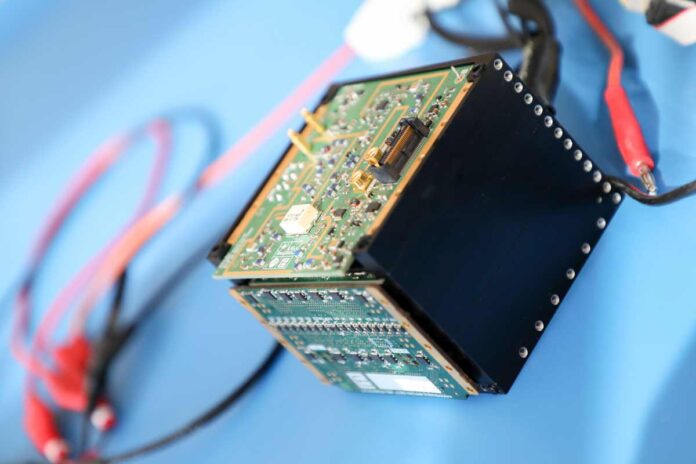Following the incredible plan to move a harmless asteroid with NASA’s DART mission, more research is required to determine exactly what kind of impact humanity had on the distant Dimorphos. With its launch in two years, the ESA’s Hera mission aims to do just that, and it will be accompanied by a scrappy sidekick in the form of a tiny radar.
The European Space Agency has named the cubic radar JuRa after the Juventas cubesat, which will be packed aboard Hera. JuRa is a 4-inch (10-centimeter) box that will accompany Hera on her visit to the post-DART Dimorphos-Didymos system in a few years.
According to ESA, JuRa is a miniature version of a probe previously used to study the surface of a comet during the Rosetta mission, which launched in 2004. According to ESA, JuRa will set two records: it will be the smallest radar instrument ever flown into space and the first radar to probe the interior of an asteroid.
Juventas is one of Hera’s shoebox-sized companions on its mission to the site of the NASA collision, the other being Milani, a CubeSat. Juventas will conduct geophysical analyses of Dimorphos, including gravity field and internal structure measurements. Milani, on the other hand, will conduct spectral analyses of Dimorphos in order to characterize the asteroid’s composition by studying any lingering dust clouds, as well as assess the effects of the DART impact.
On September 26, NASA’s Double Asteroid Redirection Test collided with Dimorphos, the junior member of the binary asteroid system, shortening its orbital trajectory around Didymos. Dimorphos’ orbital period around Didymos changed by 32 minutes, from 11 hours and 55 minutes to 11 hours and 23 minutes. In terms of movement, that equates to a few dozen feet. The DART experiment is a promising start toward the development of an effective planetary defence strategy against threatening asteroids, but there is still much to learn. As a result, the upcoming Hera mission.
Hera’s goal is to characterise any further changes in Dimporphos’ orbital trajectory, as well as collect surface and internal data on Dimorphos and Didymos using Milani, Juventas, and JuRa. The mission is set to launch in October 2024 and will arrive at Dimorphos in December 2026.

